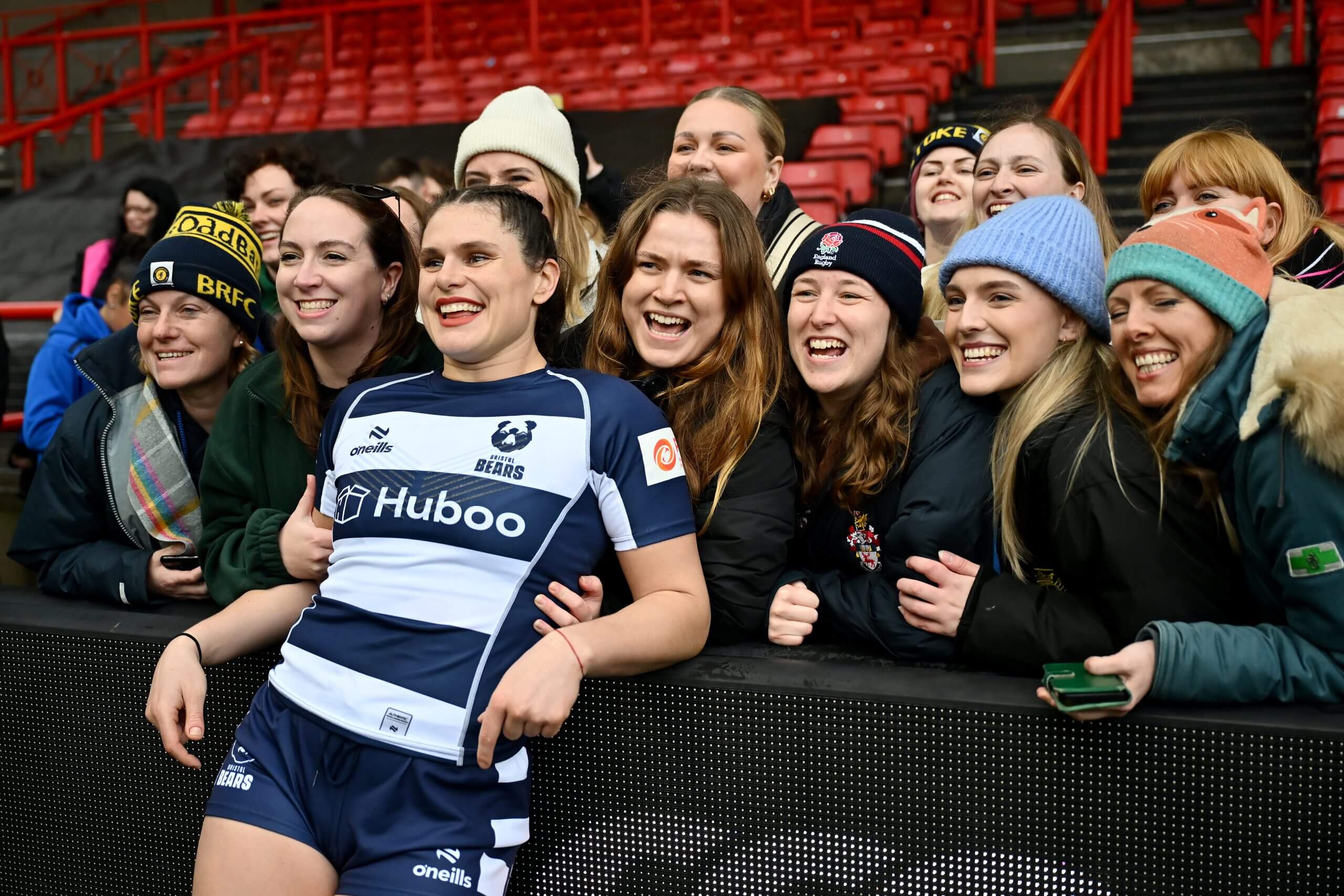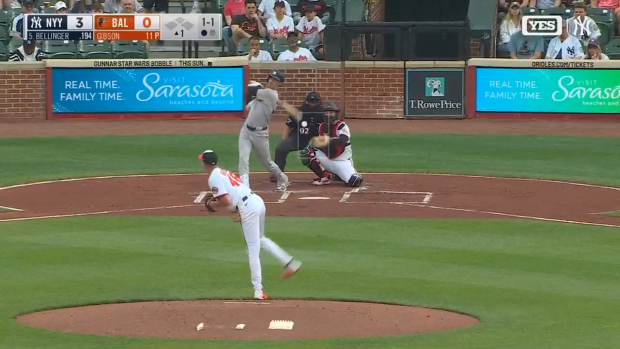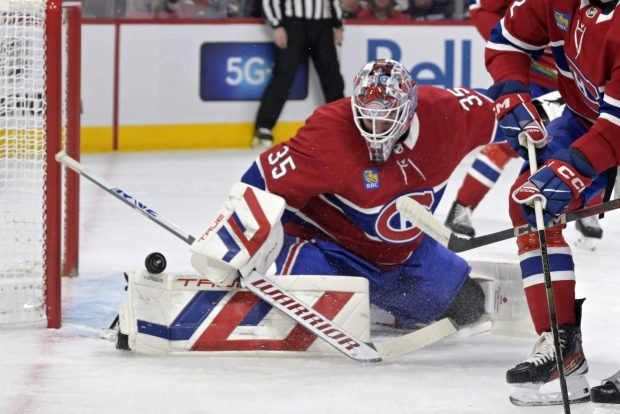
Bring the carnations. The lilies, too. Lay them at the headstone of The Game. Which is now apparently gone.
The culprit? TikTok. And, oh, Wales rugby international Jasmine Joyce-Butchers, and England rugby international Sarah Bern, and the entire institution of influencing and choreographed footwork and something called the “Chicken, Banana” dance in which participants mimic chickens and, wait for it, bananas.
Advertisement
If you missed last Saturday’s events, a summary: Joyce-Butchers apparently committed a sporting sin following England’s 67-12 demolition job of Wales in the Six Nations — an annual European international rugby tournament — when she accepted Bern’s post-match invitation to participate in a TikTok dance under the lights of BBC’s television cameras. Because, according to custom, losing by 11 tries to your ultimate nemesis in front of 21,000 people (a record crowd for Wales) begets only one, appropriate response. And that is inconsolable remorse. Public misery. Hard, ugly tears into the cameras.
So, as the full-time whistle blew inside Cardiff’s Principality Stadium, consigning Wales to a decade-long losing streak to England, why wasn’t Joyce-Butchers locking herself into a dark room and flogging herself with a stick made of shame? Why was she on the pitch where she and her team-mates had just been dragged around like bags of flour, still in her match kit, smiling and performing a dance alongside one of the players who had executed that dragging?
As the video of Joyce-Butchers and Bern went viral, spiralling through social media’s black hole after full time, these questions were worked into an online froth. People were angry, demanding decorum. Others were angry that people were angry. Social media became a familiar fault line of angry people exchanging their angriness across the void.
When the post-match interview gets interrupted for a TikTok dance 🤣#BBCRugby #W6N pic.twitter.com/K70LwP7l1f
— BBC Sport (@BBCSport) March 29, 2025
This week, Joyce-Butchers defended her decision to dance. “If we don’t love what we do, then why do it?” she posted on her Instagram, which has more than 21,000 followers. “Yes I am upset, gutted, sad and disappointed with the result, but that doesn’t mean I can’t be happy, excited and smiling to see such an amazing crowd supporting us. Remember to be kind people and put your energy and effort into people who want and accept you for who you are.”
Advertisement
Her club, Bristol Bears Women, also posted a supportive message. “We are committed to growing rugby by encouraging players to show their personalities and celebrate their contributions to our sport,” the Instagram post said. Meanwhile, BBC presenter Gabby Logan said on Tuesday in her podcast The Sports Agents that women’s rugby players were simply “taking their sport by the scruff of the neck”.
Arguably, Joyce-Butchers is asking a lot of her audience: believe in two truths simultaneously, choose grey in a world increasingly contoured black and white. Athletes can be both devastated and continue with normal life.
The seven-second video was not a one-off event, rather a function of the times. Modern life has become an endless pursuit of relevance through clicks. Sport is no different, but cutting through the white noise of men’s football and conventional sport requires unconventional thinking. Cue social media, a place where players are not rewarded only on pure sporting ability but on branding that ability to go viral.
“I’m amazing at rugby, but realistically I’m maybe not the best at it, which is fine,” American rugby union star Ilona Maher, who boasts more followers (8.4million) across Instagram and TikTok than any other rugby player in the world, told Rugby Union Weekly in December 2024. “But I have something else I can bring, which is personality.”

Ilona Maher poses for photographs with fans after making her Bristol Bears debut (Dan Mullan/Getty Images)
Maher is a walking, talking case study in the power of projection and branding in sport.
These days, players drive their own marketing ship, flaying their lives in seemingly unedited, unscripted flashes directly into our pockets. The degree of separation between athlete and fan is now a single pane of fibreglass.
This isn’t exclusive to women’s sport. The UK’s new Baller League, an influencer-led six-a-side tournament, and World Sevens Football (W7F), a women’s seven-a-side competition being held for the first time next month, are built on the tenets of virality and easily digestible entertainment.
Advertisement
Elite men’s sport regularly baptises itself in TikTok waters. See: The Griddy, Lamine Yamal’s celebratory dances for Barcelona, Norwegian swimmer Henrik Christiansen and chocolate muffins, any NFL celebration, Tottenham Hotspur and British diver Tom Daley’s knitting.
Of course, a recurring and fair question in the debris from Saturday is whether the intricacies — a defeated player dancing merrily with her vanquisher — would occur in men’s sport. The short answer? No, probably not, albeit World Cup 2026 is just a year and a bit away, arguably the first major men’s soccer tournament of this new TikTok-dance era.
The long answer? A common refrain when it comes to discussing modern women’s sport is its inherent contrast to its male counterpart and its requirement to do things differently. So, rather than asking if this incident would have occurred in the men’s game, it’s more educational to ask: why wouldn’t a male player be asked to perform a TikTok dance after a heavy defeat? Is it a question of respect or a sign that women athletes feel the need to perform in a dual capacity, as sports and social media stars, to break through the crowd and build an audience?
The BBC’s video on X has had more than three million views. Comparatively, an interview with England’s Abi Burton – who returned to the international setup for the first time in three years after having to re-learn how to walk and talk due to a rare brain illness and scored two tries against Wales – had 94,000 views on BBC Sport’s account.
The upshot for players is clear. Joyce-Butchers, 29, and Bern, 27, are two of the most high-profile names in women’s rugby union. Yet, only in 2022 did the Wales Rugby Union (WRU), the country’s governing body, announce professional contracts for Joyce-Butchers and her compatriots. Premiership Women’s Rugby (PWR), England’s elite league for women’s 15-a-side rugby union, is semi-professional. In an interview with the BBC, Maher said as a female player she had to do “10 times as much off the field” to boost her earnings.
“I can’t just play the sport I love. I’m not going to make millions playing rugby, I’m not even going to make six figures playing rugby — that’s the sad truth,” she said.
Bern told The Athletic in March of Maher: “She has made us feel really confident in front of the camera and just being able to show our silly personalities. That is what is drawing fans to our games. You can meet players, you can interact with players, and they are exactly what you see on social media.”
Advertisement
Critically, it’s not only players capitalising on the new formula but broadcast companies, too. Saturday night’s dance was not spontaneous improv, rather a carefully choreographed idea by a producer to achieve virality.
Women’s sport is attempting to play catch-up in arenas in which it was historically not permitted entry, so attracting audiences remains the top priority. Teasing out the balance between deferring to pure entertainment and maintaining high standards is an ongoing battle.
Undeniably, the landscape of sport has changed, as it does. The earth spins and culture evolves and generations hiss at each other from different storeys of life’s high-rise.
Once, England’s men’s soccer players drinking heavily in a dentist’s chair was disgraceful insolence. Over 30 years later, it’s nostalgia. Now, TikTok activates gag reflexes. It is also asking an important question: When exactly does something become the new normal?
(Top photo: Dan Mullan/Getty Images)
This news was originally published on this post .











Be the first to leave a comment